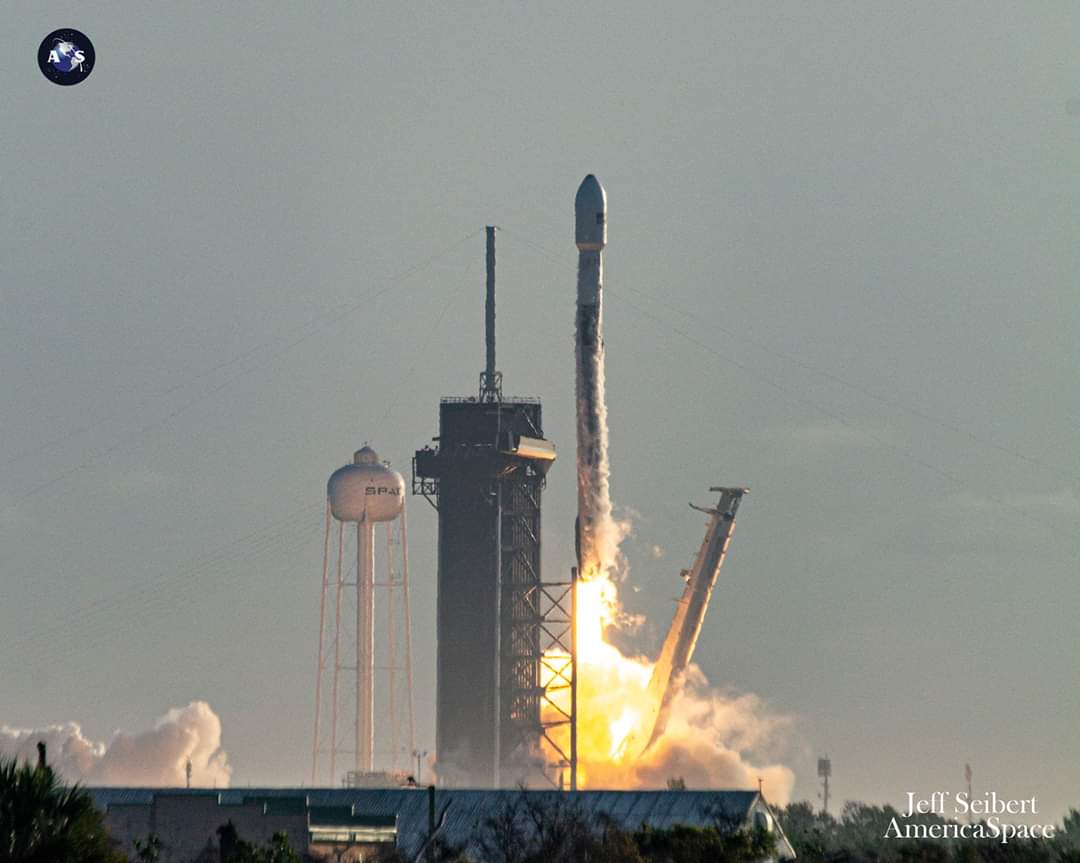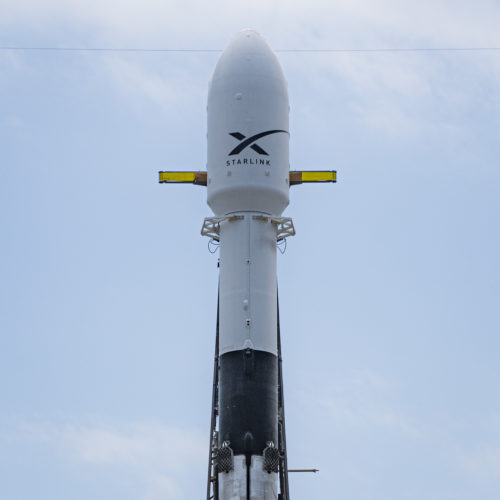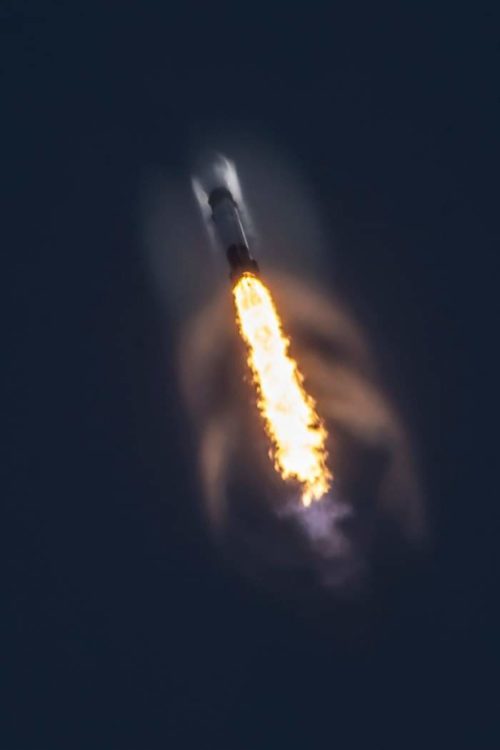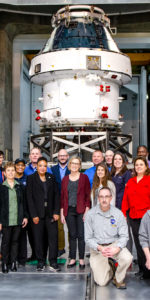
This morning, SpaceX’s rocket ‘B1048’ flew its fifth and final mission, deploying the company’s fifth batch of 60 Starlink satellites into orbit from Kennedy Space Center in Florida. And while the primary mission went well, the rocket missed its landing and therefore will never be used again.
As detailed in AmericaSpace’s preview feature, this launch held more than a touch of familiarity for onlookers, as it carried the fifth batch of 60 Starlink internet communications satellites into low-Earth orbit in less than four months. These small, flat-packed spacecraft—part of a $10 billion program which SpaceX CEO Elon Musk hopes will revolutionize low-cost internet provision, particularly to rural and underserved regions of the United States and worldwide—were pre-integrated with the Falcon 9 stack ahead of its Friday rollout to historic Pad 39A at the Kennedy Space Center (KSC) in Florida.
Following a customary Static Fire Test of the nine Merlin 1D+ first-stage engines on Friday, 13 March, SpaceX declared its readiness to support the opening launch attempt at 9:22 a.m. EDT Sunday. This was the firm’s sixth mission of 2020 and its seventh in a row to utilize a previously-flown Falcon 9 core. And staging six flights within the first ten weeks of the year marks a new record for the quickest tempo of Falcon 9 launches yet seen. Three previous Starlink batches flew within a six-week period in January and February, together with the CRS-20 Dragon cargo ship and the long-awaited in-flight abort test of the in-development Crew Dragon.

Those five missions saw three Falcon 9 cores fly for the fourth time, with another marking its third launch and yet another embarking on its second ascent. SpaceX President Gwynne Shotwell has previously noted the intent to fly Starlink missions every two weeks, which when combined with a full manifest of commercial customers raises the likelihood that 2020 may prove to be a banner year for the Hawthorne, Calif.-headquartered launch services provider.
But the similarities to previous Starlink missions ended Sunday morning, when B1048’s engines roared to life, then dramatically shut down in one of very few last-second pad aborts ever experienced by a SpaceX vehicle. “Standing down today; standard auto-abort triggered due to out of family data during engine power check,” SpaceX noted in the wake of the shutdown. “Will announce next launch date opportunity once confirmed on the Range.” By Monday, SpaceX announced its intent to support another launch attempt at 8:16 a.m. EDT Wednesday, 18 March.
Backdropped by near-perfect weather, B1048 roared aloft on time and flawlessly executed the first 2.5 minutes of ascent, pushing the 230-foot-tall (70-meter) stack to the very edge of space. It was then discarded to begin its powered descent back to land on the Autonomous Spaceport Drone Ship. But it was not meant to be, asthe rocket missed the ASDS and fell to a watery grave. No explanation from SpaceX or Elon Musk as to why.

With the first stage gone, the single Merlin 1D+ Vacuum engine of the Falcon 9’s second stage picked up the thrust to deliver the latest batch of Starlinks into their allotted orbits. Starlink is targeting service in the Northern U.S. and Canada in 2020, rapidly expanding to near global coverage of the populated world by 2021.And with Indonesia’s SAOCOM-1B Earth-imaging satellite slated to fly as soon as the end of March, we may see only the fifth occasion in SpaceX history (and the second time this year) that three Falcon 9s will have launched in a single calendar month.—With the first stage gone, the single Merlin 1D+ Vacuum engine of the Falcon 9’s second stage picked up the thrust to deliver the latest batch of Starlinks into their allotted orbits. Starlink is targeting service in the Northern U.S. and Canada in 2020, rapidly expanding to near global coverage of the populated world by 2021.And with Indonesia’s SAOCOM-1B Earth-imaging satellite slated to fly as soon as the end of March, we may see only the fifth occasion in SpaceX history (and the second time this year) that three Falcon 9s will have launched in a single calendar month.
.
.
FOLLOW AmericaSpace on Facebook and Twitter!
.
.






https://youtu.be/qO_k2F1D66A
Ufo left ekran 6:50 -7:00
Pozdrawiam Krzysztof leffelbein Poland